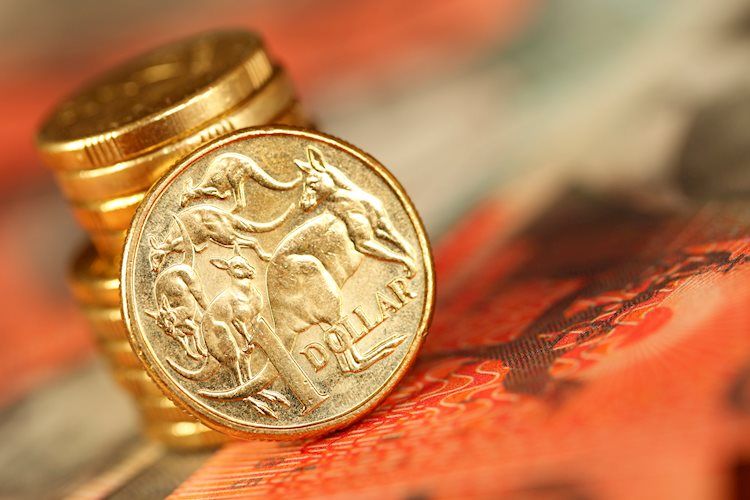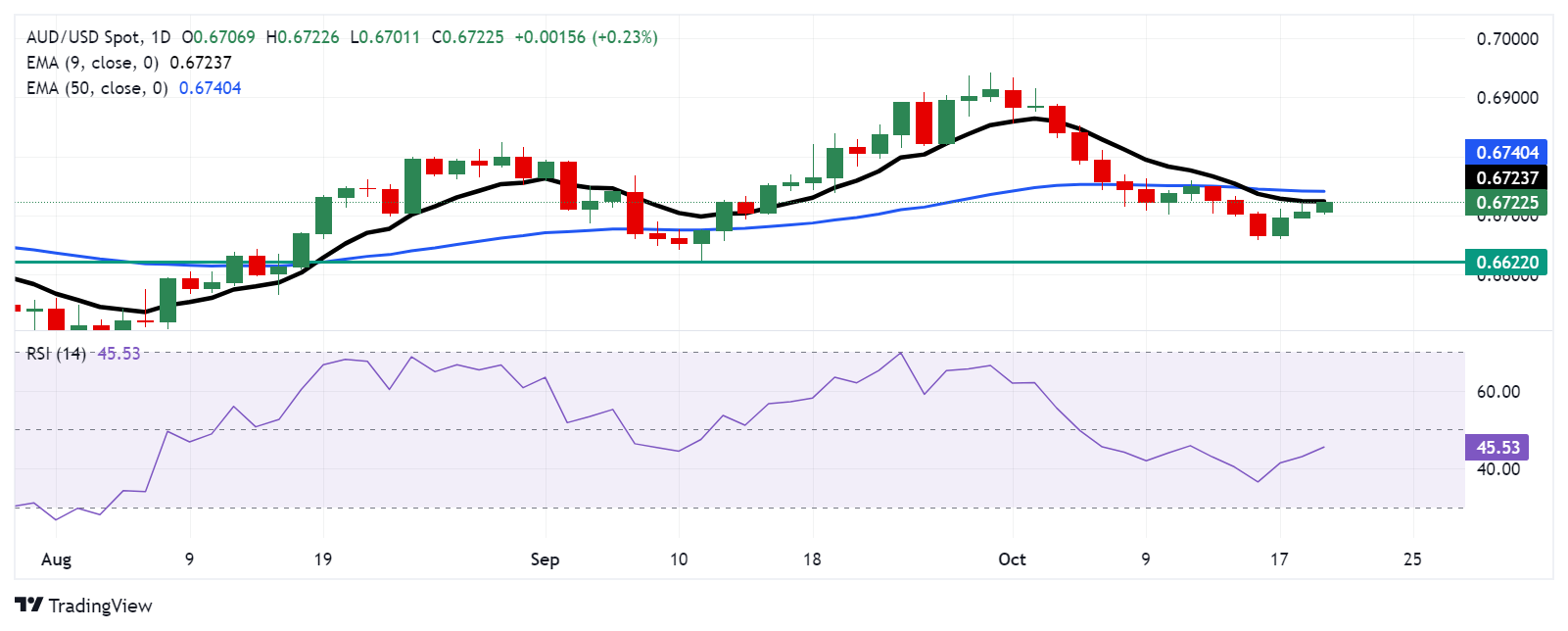- The Australian Dollar appreciates following the PBoC’s rate cuts on Monday.
- The PBoC has reduced the 1- and 5-year Loan Prime Rates to 3.10% and 3.60%, respectively.
- The Aussie Dollar appreciated as domestic upbeat labor data has lowered the odds of a RBA’s rate cut this year.
The Australian Dollar (AUD) extended its winning streak against the US Dollar (USD) for the third consecutive session on Monday. The upside of the Aussie Dollar could be attributed to the rate cuts in China, its largest trading partner.
The People’s Bank of China (PBoC) reduced the 1-year Loan Prime Rate (LPR) to 3.10% from 3.35% and the 5-year LPR to 3.60% from 3.85%, in line with expectations. Lower interest rates are anticipated to stimulate China’s domestic economic activity, potentially increasing demand for Australian exports.
Australia’s upbeat employment data, released last week, has reduced the likelihood of the Reserve Bank of Australia (RBA) implementing an interest rate cut this year. This outlook has bolstered the AUD, providing continued support to the AUD/USD pair.
RBA Deputy Governor Andrew Hauser addressed the CBA 2024 Global Markets Conference in Sydney on Monday, expressing slight surprise at the strength of employment growth. Hauser noted that the labor participation rate is remarkably high and emphasized that while the RBA is data-dependent, it is not data-obsessed.
Daily Digest Market Movers: Australian Dollar appreciates due to diminishing odds of RBA rate cuts
- The US Dollar gained support as recent data highlighting the resilience of the US economy has dispelled speculation of a 50-basis-point rate cut by the Federal Reserve (Fed) in November. According to the CME FedWatch Tool, the probability of a 25-basis-point rate cut in November stands at 94.3%, with no possibility of a 50-basis-point cut.
- National Australia Bank revised its projection for the Reserve Bank of Australia (RBA) in a note last week. “We have brought forward our expectations for the timing of rate cuts, now anticipating the first cut in February 2025, instead of May,” the bank stated. They continue to foresee a gradual pace of cuts, with rates expected to decrease to 3.10% by early 2026.
- On Friday, People’s Bank of China (PBOC) Governor Pan Gongsheng stated that the Chinese central bank has “issued specific guidelines for stock buybacks and reloans to boost holdings, emphasizing that credit funds must not illegally flow into the stock market.”
- China’s Gross Domestic Product (GDP) grew at an annual rate of 4.6% in the third quarter of 2024, slightly down from the 4.7% growth recorded in the second quarter but exceeding market expectations of 4.5%. On a quarterly basis, GDP rose by 0.9% in Q3 2024, up from 0.7% in the previous quarter but falling short of the 1.0% forecast. China’s Retail Sales in September increased by 3.2% year-over-year, outperforming both the expected 2.5% growth and the prior figure of 2.1%.
- US Retail Sales rose by 0.4% month-over-month in September, surpassing the 0.1% gain recorded in August and market expectations of a 0.3% increase. Additionally, US Initial Jobless Claims fell by 19,000 during the week ending October 11, the largest decline in three months. The total number of claims dropped to 241,000, significantly below the anticipated 260,000.
- The seasonally adjusted Employment Change in Australia surged by 64.1K in September, bringing the total employment to a record 14.52 million. This far surpassed market expectations of a 25.0K increase, following a revised rise of 42.6K in the previous month. Meanwhile, the Unemployment Rate remained steady at 4.1% in September, matching the revised figure for August and coming in lower than the anticipated 4.2%.
- Last week, Reserve Bank of Australia (RBA) Deputy Governor Sarah Hunter reiterated the central bank’s commitment to curbing inflation, emphasizing that although inflation expectations remain well-anchored, ongoing price pressures continue to present significant challenges.
Technical Analysis: Australian Dollar remains above 0.6700; barrier at nine-day EMA
The AUD/USD pair trades around 0.6720 on Monday. A technical analysis of the daily chart indicates that the pair is positioned below the nine-day Exponential Moving Average (EMA), suggesting a short-term bearish bias. Additionally, the 14-day Relative Strength Index (RSI) remains below 50, confirming the prevailing bearish sentiment.
In terms of support, the immediate level to watch is the psychological barrier at 0.6700. A break below this level could exert downward pressure on the AUD/USD pair, pushing it toward the eight-week low of 0.6622, last seen on September 11.
On the upside, the AUD/USD pair may test the nine-day EMA at 0.6723, followed by the 50-day EMA at 0.6740. A break above the latter could support the pair to test the psychological level of 0.6800.
AUD/USD: Daily Chart
Australian Dollar PRICE Today
The table below shows the percentage change of Australian Dollar (AUD) against listed major currencies today. Australian Dollar was the strongest against the Canadian Dollar.
| USD | EUR | GBP | JPY | CAD | AUD | NZD | CHF | |
|---|---|---|---|---|---|---|---|---|
| USD | 0.00% | 0.00% | -0.22% | -0.05% | -0.11% | -0.18% | 0.06% | |
| EUR | -0.01% | -0.07% | -0.31% | -0.00% | -0.14% | -0.30% | -0.03% | |
| GBP | -0.01% | 0.07% | -0.25% | -0.06% | -0.11% | -0.19% | -0.00% | |
| JPY | 0.22% | 0.31% | 0.25% | 0.17% | 0.11% | 0.09% | 0.22% | |
| CAD | 0.05% | 0.00% | 0.06% | -0.17% | -0.15% | -0.07% | -0.02% | |
| AUD | 0.11% | 0.14% | 0.11% | -0.11% | 0.15% | 0.00% | 0.10% | |
| NZD | 0.18% | 0.30% | 0.19% | -0.09% | 0.07% | -0.00% | 0.19% | |
| CHF | -0.06% | 0.03% | 0.00% | -0.22% | 0.02% | -0.10% | -0.19% |
The heat map shows percentage changes of major currencies against each other. The base currency is picked from the left column, while the quote currency is picked from the top row. For example, if you pick the Australian Dollar from the left column and move along the horizontal line to the US Dollar, the percentage change displayed in the box will represent AUD (base)/USD (quote).
Australian Dollar FAQs
One of the most significant factors for the Australian Dollar (AUD) is the level of interest rates set by the Reserve Bank of Australia (RBA). Because Australia is a resource-rich country another key driver is the price of its biggest export, Iron Ore. The health of the Chinese economy, its largest trading partner, is a factor, as well as inflation in Australia, its growth rate and Trade Balance. Market sentiment – whether investors are taking on more risky assets (risk-on) or seeking safe-havens (risk-off) – is also a factor, with risk-on positive for AUD.
The Reserve Bank of Australia (RBA) influences the Australian Dollar (AUD) by setting the level of interest rates that Australian banks can lend to each other. This influences the level of interest rates in the economy as a whole. The main goal of the RBA is to maintain a stable inflation rate of 2-3% by adjusting interest rates up or down. Relatively high interest rates compared to other major central banks support the AUD, and the opposite for relatively low. The RBA can also use quantitative easing and tightening to influence credit conditions, with the former AUD-negative and the latter AUD-positive.
China is Australia’s largest trading partner so the health of the Chinese economy is a major influence on the value of the Australian Dollar (AUD). When the Chinese economy is doing well it purchases more raw materials, goods and services from Australia, lifting demand for the AUD, and pushing up its value. The opposite is the case when the Chinese economy is not growing as fast as expected. Positive or negative surprises in Chinese growth data, therefore, often have a direct impact on the Australian Dollar and its pairs.
Iron Ore is Australia’s largest export, accounting for $118 billion a year according to data from 2021, with China as its primary destination. The price of Iron Ore, therefore, can be a driver of the Australian Dollar. Generally, if the price of Iron Ore rises, AUD also goes up, as aggregate demand for the currency increases. The opposite is the case if the price of Iron Ore falls. Higher Iron Ore prices also tend to result in a greater likelihood of a positive Trade Balance for Australia, which is also positive of the AUD.
The Trade Balance, which is the difference between what a country earns from its exports versus what it pays for its imports, is another factor that can influence the value of the Australian Dollar. If Australia produces highly sought after exports, then its currency will gain in value purely from the surplus demand created from foreign buyers seeking to purchase its exports versus what it spends to purchase imports. Therefore, a positive net Trade Balance strengthens the AUD, with the opposite effect if the Trade Balance is negative.

